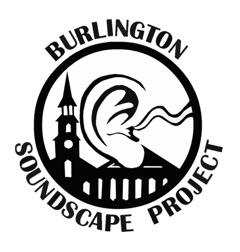
How are religious communities formed through their practices of listening and sounding? How does sound and hearing shape religious experiences, and how do religious traditions seek to structure or discipline hearing, listening, and sounding in specific times and places? How does urban space both limit and enable religious experiences via sound?
This site features sonic ethnographies of religious communities in Burlington, Vermont. Students completed ethnographic research at sites in Burlington that have an important religious and sonic significance for those communities. Each ethnography features a sound composition, a sound map, and a written analysis of the relationships between sound, space, and religion for each community.
How to use this site: If you wish to view each individual ethnography in its complete form (sound/map/analysis) then you should click on “Stories” in the left hand menu bar. You may view the maps or listen to the sound by clicking the appropriate links in that menu as well. You can also sort our data using the Category tools (Denominations/Neighborhoods/Sound Types/Space Types) in the top menu bar. Finally, you can see how each ethnography draws on analytic categories developed by scholars of sound, space, and religion by clicking on links in the “Concepts” tag cloud on the lower left hand side of the screen.
A note about the nature of “religious community” in Burlington: It is frequently noted that Vermont is one of the least religious states in the US. However, in this class we take an anthropological approach towards how we identify religious communities, one that relies on definitions developed by scholars such as Bruce Lincoln, rather than assuming that for a community to be “religious” it must be connected to historically recognized religious institutions. Thus, while conventional religious “denominations” are part of how we categorized our data, we also feature categories such as “secular” and “civic” to include such sites where values, practices, and experiences that may be usefully analyzed as “religious”–such as the Burlington Farmer’s Market–in our documentation of religious sounds in Burlington.